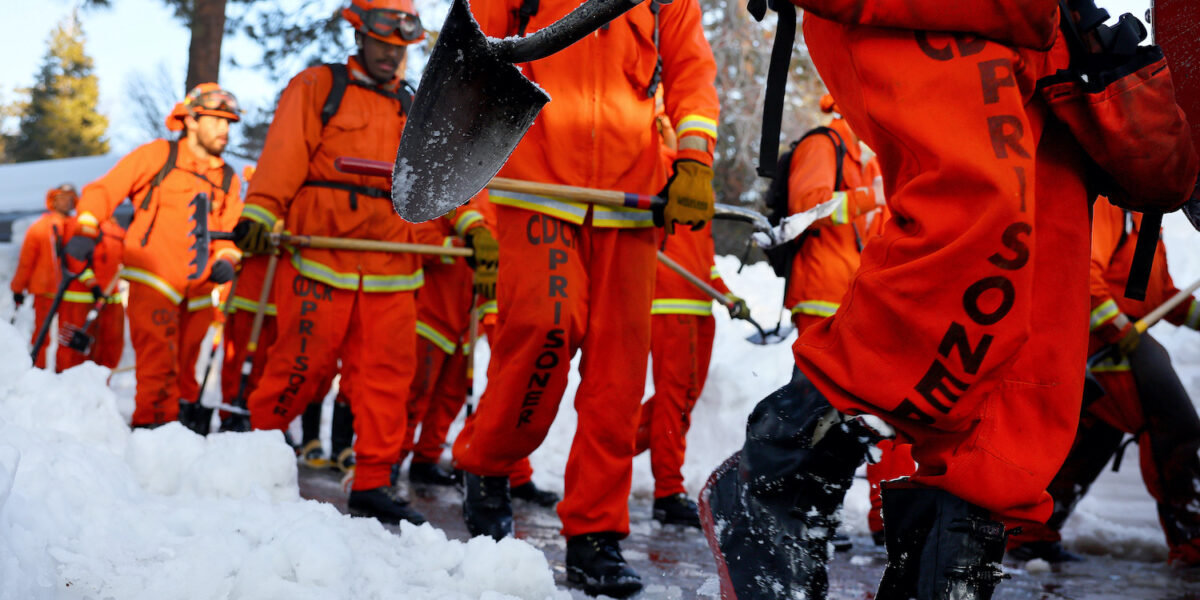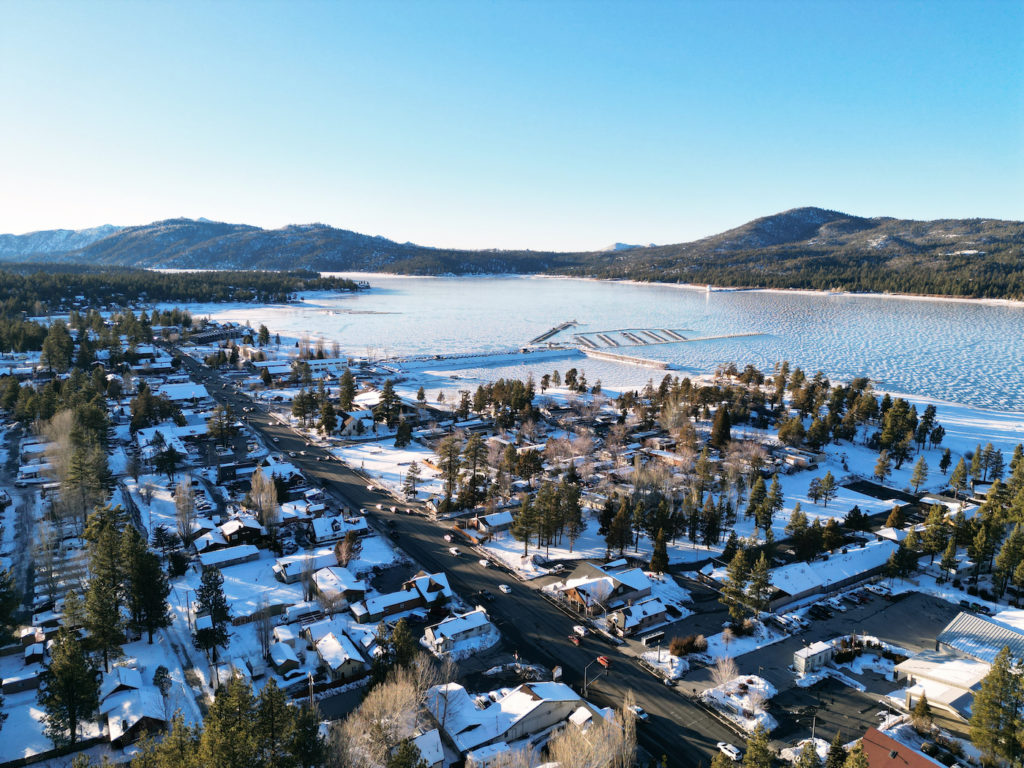
Dwindling Supplies, Downed Power Lines, Exploding Homes: Inside the San Bernardino Mountains’ State of Emergency
A look back at last winter’s devastating storms in the San Bernardino Mountains.

Mario Tama/Getty Images
We’re usually covering Big Bear, Lake Arrowhead, and their surrounding communities for the charming A-Frame cabins, amazing indie food scene, and incredible outdoor activities, but these days, our favorite SoCal mountain region is in real trouble. After a punishing winter storm hit the area, its citizens are stranded, snowbound in their homes without heat or power, with essential services under threat. Experts anticipate it’ll be weeks before roads are fully cleared, with no real end in sight.
To make matters worse, supplies are dwindling, not just because people are snowed in, but because two of the three area supermarkets have been red-tagged—one actually had its roof collapse under the weight of the snow.
Nathan Hazard, owner of Littlebear Bottle Shop, is based in Crestline, one of the lower-elevation mountain towns in the San Bernardino Mountains impacted heavily by the intense snowfall. He described an almost apocalyptic scene, where roofs are collapsing under the weight of snow, and homes are actually exploding due to gas leaks.
“We suddenly went from this growing and blossoming community, to now not knowing how long it’s going to take to recover. Ten feet of snow just doesn’t happen here. We’ve gotten the same amount of snow as Big Bear,” he says. “The county wasn’t prepared for it. Usually roads are plowed every few inches, but no one was plowing. No one ever came, that’s why it’s almost insurmountable at this moment. There’s 5-6 feet of snow pack. There are one-lane roads with 10-foot berms on either side. None of it seems real, it’s so crazy.”

Thomas J. Story
A lot of people are still stuck in their homes because plowing is focused on throughways and highways, some of which have opened up. However, the county’s public works department handles the residential roads, so there are countless people who can’t get out of their houses or access their cars. Many are hiking to neighbor’s houses in five feet of snow to check in, and Hazard says that community members are DIYing a Google Form synced up to a Google Map so that they can deliver necessities.
“You’re seeing the craziest grassroots organization on the community level—neighbors banding together, getting on snowmobiles to bring food and medication,” Hazard says. “So far it’s all been community-oriented; the county is just barely getting to try to get a truck of provisions up today. We’re at day 13 and you’re just now getting trucks up to deliver food?”
Many of the programs the community needs actually require a federal declaration, which is what Hazard and his neighbors are hoping for.
“It’s unlike anything anyone has ever seen here. To be honest, there is a bit of that PTSD because for a lot of people, being trapped at home, having food being inaccessible; it’s an eerie reminder of what we experienced during the pandemic,” he says. “Small businesses like me have been trying to build and grow this area, and we were just starting to feel like we hit a stride. Now we’re back into survival mode. You have to wonder, how long is it going to take for us to recover?”
The hope is that some aid may come through for small businesses impacted by the storm, which also would come with the federal declaration. Though it may sound tempting to visit the mountains with all the fresh snow to support the community in their time of need, CalTrans is advising visitors and non-residents to wait until local communities can clean up, recover, and make progress in the areas before doing so.
“Everyone is watching Last of Us,” says Hazard. “And we’re here living it.”
Read the Current Issue Here!
Get one year of Sunset—and all kinds of bonuses—for just $29.95. Subscribe now!
